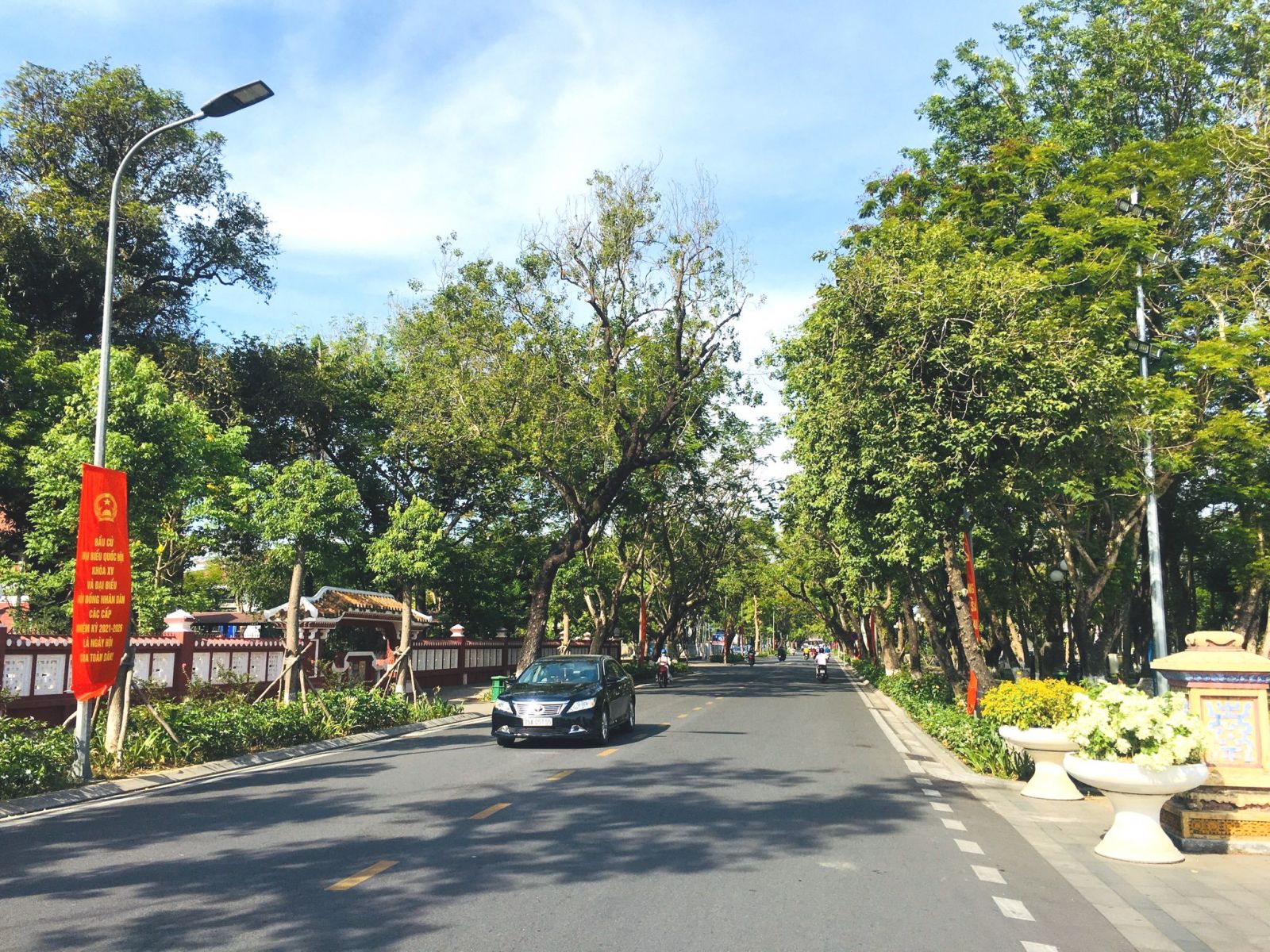
Le Loi Street. Photo: Ngoc Ha
Leaving the picturesque streets in the Inner Citadel, I cycled across Truong Tien Bridge to the downtown area in the southern side of the Huong River. There was no need to give any comment for Le Loi Street. The “beautiful to every centimeter” street has become more and more beautiful over time.
The beautiful small streets connecting Le Loi Street with Nguyen Hue Street, locating a little deeper inside such as Le Lai St., Phan Boi Chau St., and Nguyen Truong To are also “taken care of” and invested in embellishment. All of them are gorgeous streets.
As for Ngo Quyen St., although this one is quite narrower for a normal traffic flow, it still catches the attention of a great number of tourists and local people, especially the one who are in love with photography with the ironwood tree rows, which Hue people prefer to call as Heliconia Firebird or Yellow Caesalpinia ferria.
It’s even ineffable when Hue comes to flower season. Flower bloom on the canopies, falling and turning the road surfaces into huge flower carpets. The ravishing yellow-dyed road makes the footsteps of the passerby seem lighter so as not to spoil the perfect painting made by human’s hands and the Creator.
Unfortunately, such a beautiful road lacks kerbs. It will be perfect if the road’s margins are constructed. I have regretted and made wishes many times. At present, the wish comes true with the road’s kerbs being built, and it satisfies “someone’s” expectation.
From Ngo Quyen Street, I slowly rode my bicycle and turned to Nguyen Truong To Street to Le Loi Street. This street is located between two famous schools in Hue - Quoc Hoc and Dong Khanh-Hai Ba Trung. Although it is small, it is brimful of memories and nostalgia that makes many the old “school girls and boys” feel sob and hesitantly set foot on it whenever coming back.
All of a sudden, somewhere on the green arches from the schoolyard echoed the birdsong of the warblers and Zosterops, which made me unable not to stop to enjoy the beautiful melody of nature. Several tourists, who go jogging were also petrified with the birdsongs. They thought that there was someone raising birds in the surrounding area until I said that was the sound of wild birds.
And in the Hue of mine, the concept of “birds back to the city” is no longer a strange thing. All of them burst out of excitement: "Amazing! Only a word to say: amazing!”.
It's not my impromptu in saying that, but "birds back to the city" is something that has been happening to Hue for many years, when the system of streets and parks trees has been expanded, taken care of, and protected day by day. Not only common kinds of birds such as flowerpeckers and sparrows but also Zosterops, red-whispered bulbuls, parrots, warblers, nightingales, etc., call for flying back to Hue
Recently, white storks have came in crowds to search for food and take Da Vien Islet as their habitat. In the afternoon, flocks of white stocks fly all over the Huong River creating an indescribable interesting, and peaceful scene.
Hue may not be a wealthy city. However, there are not many cities that are as affluent as Hue in the landscape and environment. Someone said that it is easy to be rich in money, but more difficult to be rich in environment and landscape. It seems to be true by thinking of it.
For these reasons, it is simple for me to love Hue. Even more, it is common to witness local people live in Hue but still miss Hue. Hence, ‘Hue Dream’, which is cherished by everyone, is an understandability.
By Huy Khanh
